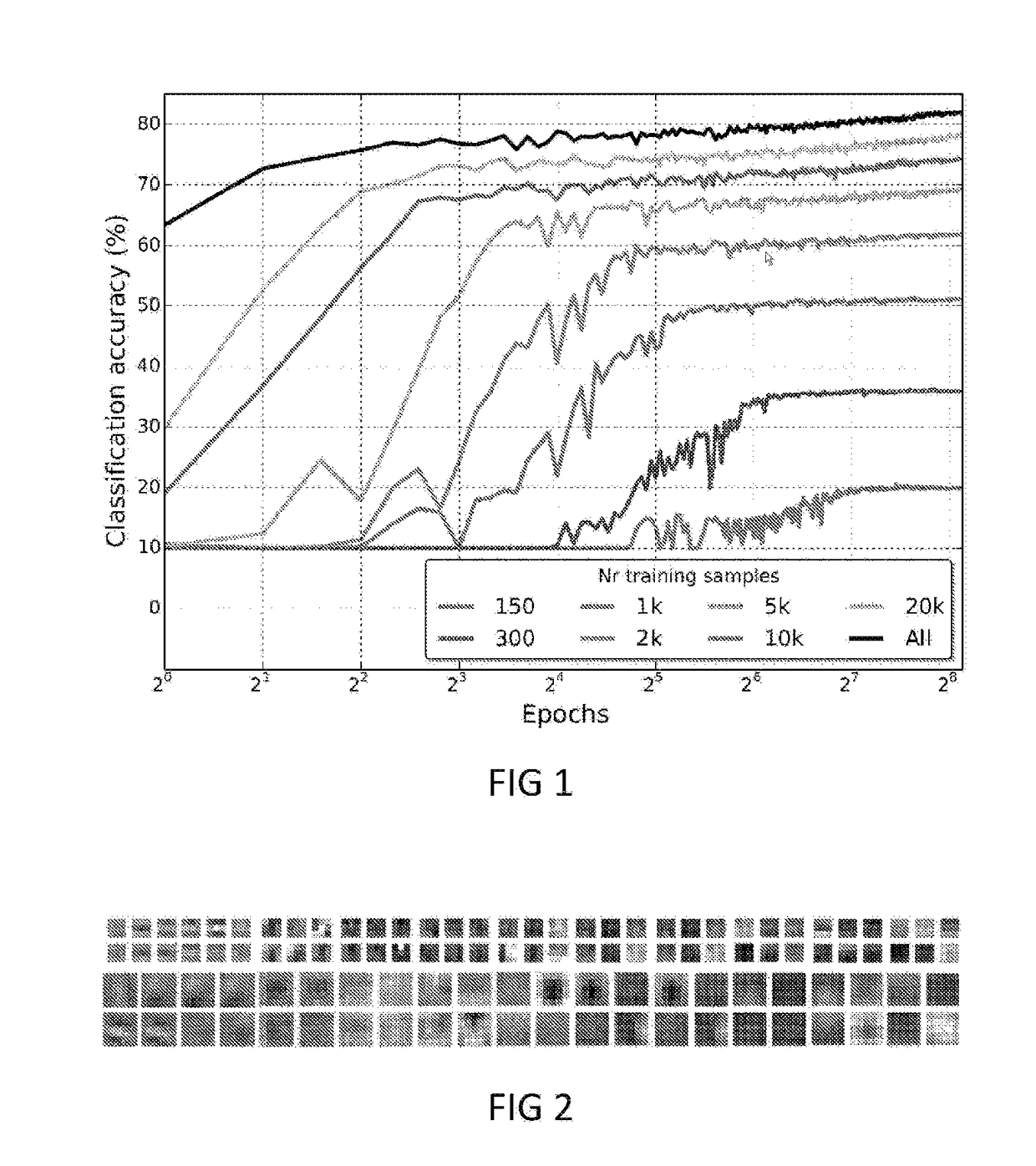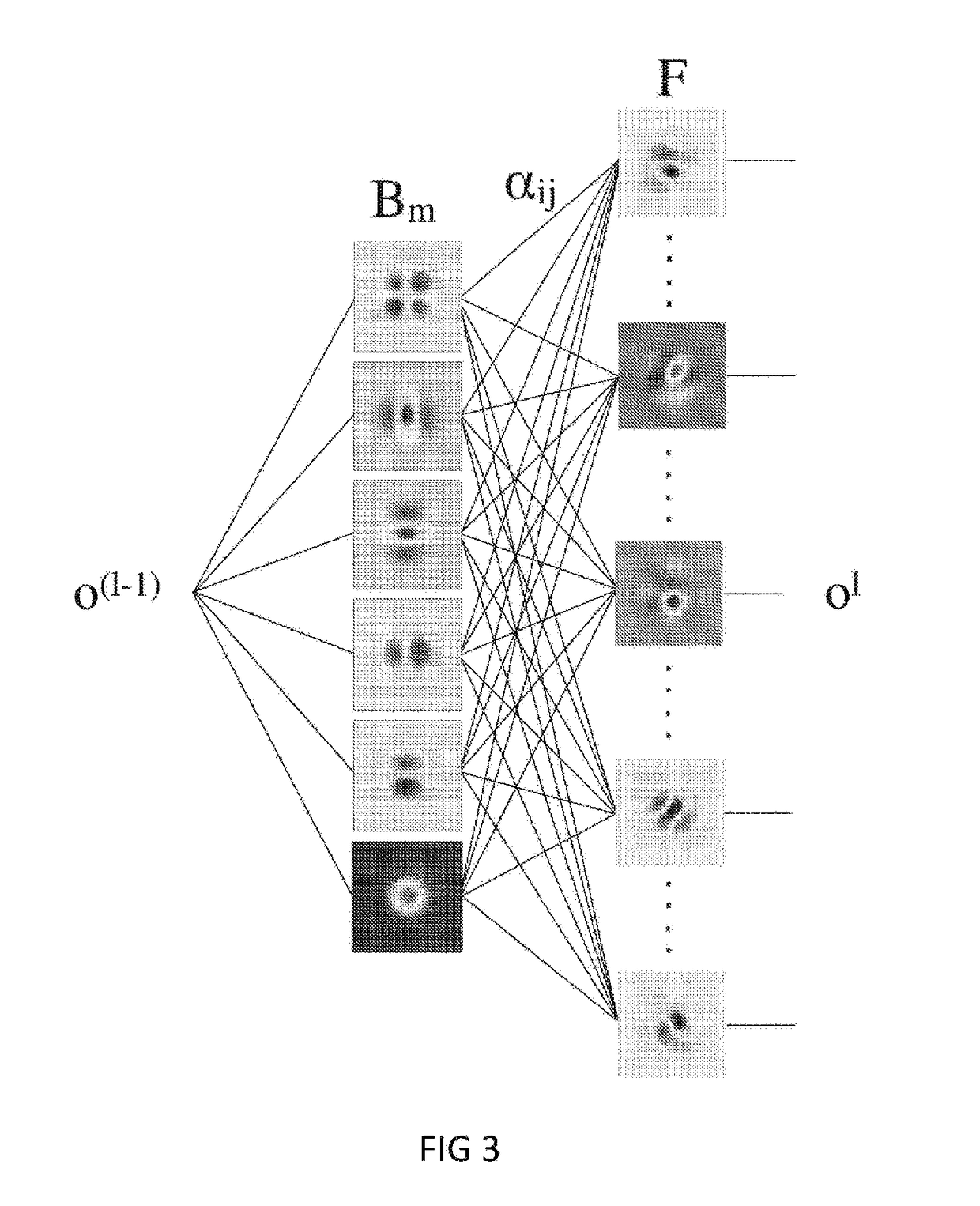Deep receptive field networks
a deep-receptive field and network technology, applied in the field of deep-receptive field networks, can solve the problems of large number of parameters, limiting the time needed, and huge amount of digital image data, and achieve the effect of reducing computation and reducing data sets
- Summary
- Abstract
- Description
- Claims
- Application Information
AI Technical Summary
Benefits of technology
Problems solved by technology
Method used
Image
Examples
Embodiment Construction
[0063]Convolutional neural networks have large numbers of parameters to learn. This is their strength as they can solve extremely complicated problems. At the same time, the large number of parameters is a limiting factor in terms of the time needed and of the amount of data needed to train them (Krizhevsky et al., 2012; Coates et al., 2011). For the computation time, the GoogLenet architecture trains up to 21 days on a million images in a thousand classes on top notch GPU's to achieve a top-5-error. For limited data availability the small experiment in FIG. 1 quantifies the loss in performance relative to an abundance of data. For many practical small data problems, pretraining on a large general dataset is an alternative, or otherwise unsupervised pretraining on subsets of the data, but naturally training will be better when data are of the same origin and the same difficulty are being used. Therefore, the reduction of the effective number of free parameters is of considerable imp...
PUM
 Login to View More
Login to View More Abstract
Description
Claims
Application Information
 Login to View More
Login to View More - R&D
- Intellectual Property
- Life Sciences
- Materials
- Tech Scout
- Unparalleled Data Quality
- Higher Quality Content
- 60% Fewer Hallucinations
Browse by: Latest US Patents, China's latest patents, Technical Efficacy Thesaurus, Application Domain, Technology Topic, Popular Technical Reports.
© 2025 PatSnap. All rights reserved.Legal|Privacy policy|Modern Slavery Act Transparency Statement|Sitemap|About US| Contact US: help@patsnap.com



